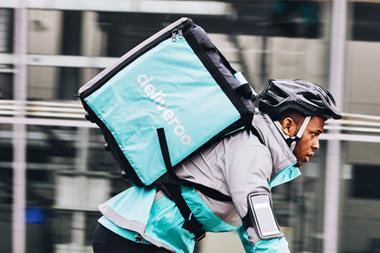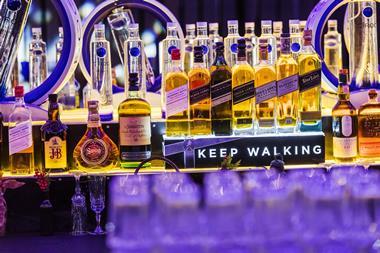The grocery sector is splashing the cash on advertising in the run-up to Christmas but the tactics this year have changed, finds Charlie Wright
Kerry Katona is long gone, of course. But so is Des O'Connor, The Spice Girls, Ant & Dec, Victoria Wood, Paul Whitehouse. Even this year's hottest celebrity Cheryl Cole has been ignored. Food and drink retailers may be splashing the cash on ads this festive season but the tactics look markedly different.
Christmas has historically been a time for supermarkets to show their light, humorous side. But the ads this year are more sparse and to the point, says Billetts head of marketing and insight Richard Hemming. "Spend on branding ads has fallen significantly as supermarkets highlight [tactical] promotions."
The mood was typified by Tesco. It got serious, increasing its combined outlay by almost 29% to £9.2m in November, according to figures supplied exclusively to The Grocer by media monitoring and analysis agency Billetts this week, overtaking Asda in the process to become the heaviest advertiser over the November period.
While the biggest increase in outlay was on TV spend, up 36.7% and featuring short, tactical price-promotion ads, on the press side Tesco also set out its stall in no uncertain terms at the start of the Christmas push on 29 October by booking the first nine ad sites in The Sun, and press advertising was up 21.9%.
Asda also upped its outlay, however, and it was similarly deal-focused. It is trying to convey a consistent value message, explains marketing director Matthew Sinnock. "We've moved away from single-product advertising towards more general pricing messages."
Of course, celebrities did still feature for some of the supermarkets. The latest extravaganza from Morrisons once again used Richard Hammond alongside Denise Van Outen. Sainsbury's offered up Jamie Oliver in a street scene ad, with Ant & Dec notably absent this time round. Also missing in Iceland's ads was Kerry Katona, with Jason Donovan playing a bigger role in the new party piece.
But in each case TV ad spend actually fell, down 5.2% in the case of Morrisons. And this year has also been notable for the multiples rehashing last year's branded ad campaigns. Take The Co-operative Group. It may have increased spend by 76.6%, making its Good With Food campaign a near-ubiquitous presence on TV screens in November, but as with the creative by Waitrose (featuring troops coming home), viewers had seen the ads 12 months earlier.
A focus on price has always been a feature of Aldi and Lidl's advertising, and here it was simply the scale of the increase that struck, with ad spend doubling in both cases. Lidl's tenfold increase in TV was used to play catch-up against its arch rival; while Aldi's print spend, up 260%, now almost exactly mirrors Lidl's.
The other key change seen in the market in November was the increased importance of press advertising. While TV spend was up 11.4% to £24.4m, print rose 36.4% to £18.7m and among the big four, Sainsbury's, in particular, almost doubled its investment to £2.1m.
"Sainsbury's is adopting a strategy used by Tesco and Morrisons running multiple ads in one issue to dominate readers' consciousness and reinforce their value message," says Hemming.
Press ads, especially within high-circulating titles such as the Daily Mail, Daily Mirror and The Sun, are more suitable in this climate because they drive promotions, and that suits shoppers perfectly, says Neil Jones, director of commercial strategy at News International. "Our readers have been price-led in their decision-making over the past 12 months." It seems hunger for a deal will be every bit as important as food this Christmas.
Read more
Only Morrisons takes festive ads down a gear (12 December 2009)
Sign in to comment on this article
Not logged in before? Register for FREE guest access today.
You will be able to:
- Read more stories
- Receive daily newsletters
- Comment on stories
Advert














No comments yet